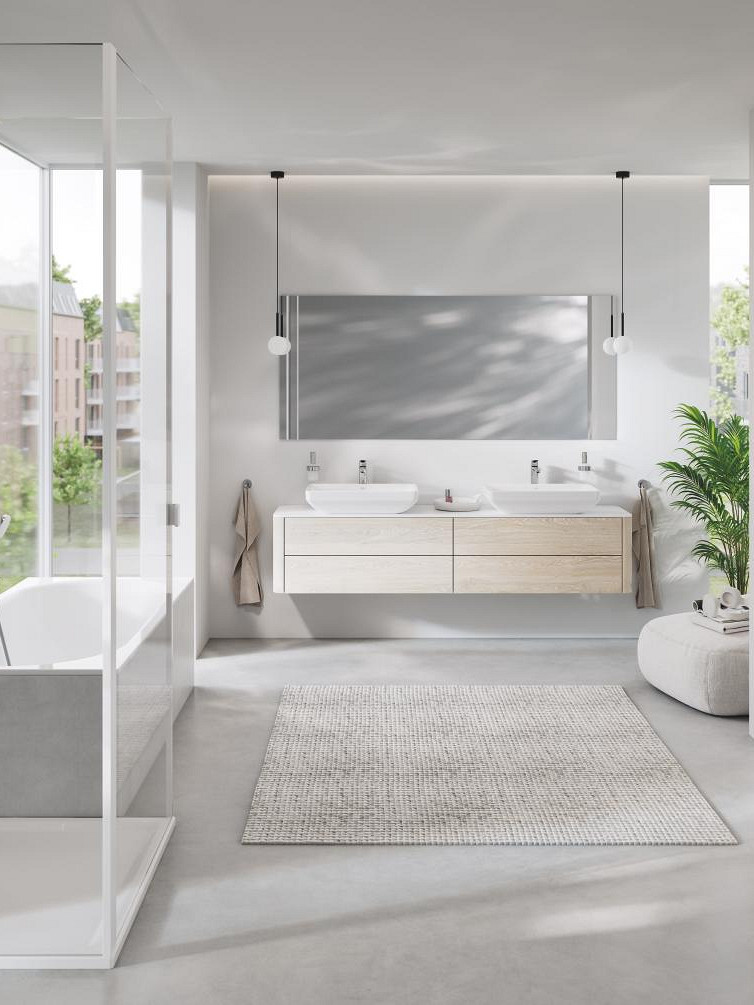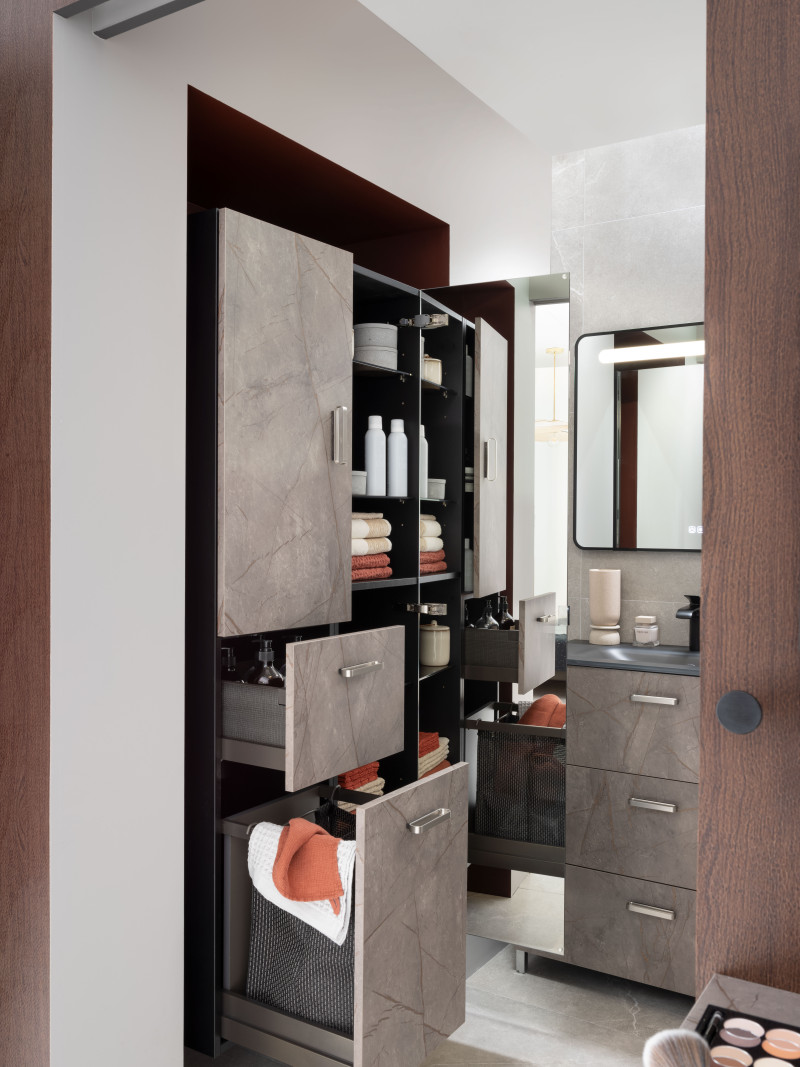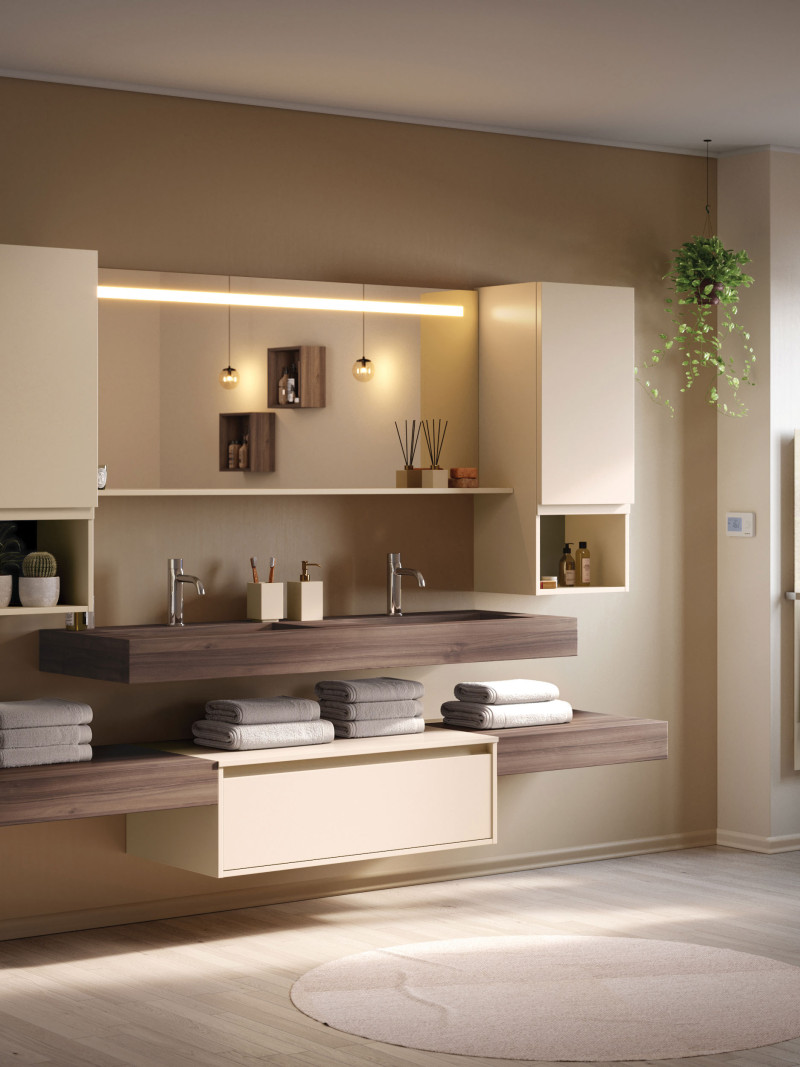Want to design your bathroom efficiently? Avoid these 6 common mistakes

1. Not enough thought given to layout and walking space
When designing a bathroom, we often don't think enough about the layout and walking space. For example, many people choose furniture that is actually too big for the available space, resulting in a cramped and impractical bathroom. Or they place the walk-in shower too close to the sink or toilet, causing everything to get wet.
What should I consider when designing my bathroom to make optimal use of the space?
To measure is to know
Measure your space accurately and, if necessary, draw a scale floor plan. This will help you find the right furniture. You need about 60 cm of free space around the sink and at least 45 cm on each side of the toilet.Work with different zones
Consider the logical placement of the sink, toilet, and shower and/or bathtub, taking walking routes into account. Ensure that the different areas do not obstruct each other, such as a shower door that opens into an open drawer.Take into account the location of pipes
Relocating water pipes, drains, and electricity is possible, but it requires work and budget. Relocating drain pipes in particular can be difficult, as they need a minimum slope for proper flow.
2. Insufficient or impractical storage space provided

How can I ensure sufficient storage space in my bathroom without compromising on style and space?
Take advantage of the height
Tall column cabinets make use of walls that would otherwise remain empty and are ideal for towels or storing bath foam, soap, and other essentials.Choose a mirror cabinet
Although there are many trendy mirrors on the market today, a mirror cabinet remains practical. If only to hide your (electric) toothbrushes from view.Invest in multifunctional furniture
Think of a radiator with a mirror and towel rack, a sink with drawers underneath, or a cabinet with a laundry basket at the bottom.
3. Poor choice of materials
The choice of materials is also crucial when building or renovating a bathroom. Not only for the appearance (here too, we sometimes blindly follow trends), but also for the comfort, maintenance, and lifespan of your bathroom. A damp environment places specific demands on floors, walls, furniture, and accessories.
What should I consider when choosing materials for my bathroom?
Make sure your materials are moisture resistant
Bathrooms are constantly exposed to water and steam. Therefore, always choose materials that can withstand moisture. When you purchase your bathroom from Facq, you can rest assured that all products are suitable for damp areas.Consider maintenance
Would you rather spend as little time as possible cleaning your bathroom? Then choose smooth, non-porous materials that are easy to clean. Think of lacquered or coated surfaces and seamless shower walls.Invest in sustainable materials
Investing in durable materials pays off in the long term. Cheap options wear out faster and are often unable to withstand intensive bathroom use.
4. Lack of future-proofing
A new bathroom usually lasts around 15 to 20 years. And yet, during the design phase, we rarely consider changing life circumstances such as aging, limited mobility, or family expansion. Naturally, you want to avoid having to renovate your bathroom again in a few years' time.
How do I create a future-proof bathroom?
Choose timeless design
A future-proof bathroom does not follow trends, but starts from a neutral, timeless basis. Think of calm colors such as white, sand, gray, or soft earth tones, combined with natural materials such as wood or stone.Think about comfort, now and in the future
A future-proof bathroom takes different stages of life into account without compromising on style. Provide sufficient storage space, modular furniture, or a walk-in shower without a step.Think ahead when installing pipes
Would you like to install a second sink in the future, or are you considering a shower toilet? Install the necessary pipes now to avoid demolition work later.
5. Insufficient consideration given to lighting

What kind of lighting should I choose for my bathroom?
Work with multiple light sources
Combine general lighting (such as recessed spotlights) with targeted lighting near the mirror and soft mood lighting around the bathtub. This allows you to adjust the lighting to suit any time of day.Choose the right color shade
For a natural look, choose warm white light (2700–3000K), especially near the mirror. Avoid cold bluish light, as it makes the room feel cold and distorts colors.Pay attention to the correct IP rating (water resistance)
In damp areas, you need fixtures with an IP44 rating or higher. This prevents short circuits and extends the life of your lighting.
6. Poor ventilation
Ventilation is an invisible aspect, which means it is often overlooked when designing a bathroom. However, it is a basic requirement for a healthy and sustainable bathroom. Without sufficient air circulation, you will suffer from condensation, mold growth, and musty odors. And that's not only bad for your bathroom, but also for your health and wallet.
What is the best way to ventilate my bathroom?
Install a mechanical ventilation system
This is especially important in bathrooms without windows. Choose a system with a moisture sensor or a delay timer so that it continues to run for a while after you have finished showering.Ensure extra natural air circulation
A window that can be opened, a ventilation grille above, or a gap at the bottom of the door helps to remove moist air more quickly. Always combine this with mechanical ventilation.Make ventilation easy to maintain
A ventilation system is only effective if it stays clean. Choose a model with filters that are easy to clean or replace, and make this a regular maintenance task.